
Glasgow School of Art (GSA), a specialist higher education institution with 2,500 students, had been using static PDF lists for course resources for many years. In 2019, they decided to implement a resource list management platform for the first time. While functional, these lists lacked flexibility and adaptability, and the shift to hybrid teaching during COVID-19 highlighted their limitations. Therefore, they decided to implement a new system to meet their changing needs.
GSA identified 14 essential and desirable criteria to guide their search for a new solution, prioritizing enhanced student and academic experiences alongside improved library workflows. Students needed the ability to filter, search, and customize reading lists. Academics sought seamless integration with the Virtual Learning Environment (VLE), public accessibility for prospective students, and exportable bibliographic references. For the library team, integration with the CLA’s Digital Content Store (DCS) was critical.
After evaluating various options, Talis Aspire was chosen for its flexibility and ability to align resource lists with course structures and extracurricular activities.
GSA’s library team successfully managed the migration to Talis Aspire, supported by flexible onboarding from Technology from Sage’s Operations team. Despite a tight two-month timeline before the academic year, the team ensured a smooth transition. The expertise and adaptability of the Customer Success Consultants were pivotal in meeting GSA’s needs.
“We asked to move some of our training around to accommodate staff leave over the summer which was kindly granted. The Customer Success Consultants are very friendly, flexible and keen to help.”
Jenna Meek, Assistant Librarian – Resource Lists, Glasgow School of Art
A detailed workflow was established to facilitate collaboration across library teams, enabling the migration and refinement of nearly 300 lists. This approach ensured accurate metadata, streamlined processes, and lists that were ready for use. The Operations team also guided the library staff in creating instructional materials to demonstrate key functionalities, such as filtering, note-taking, and bibliographic exports.
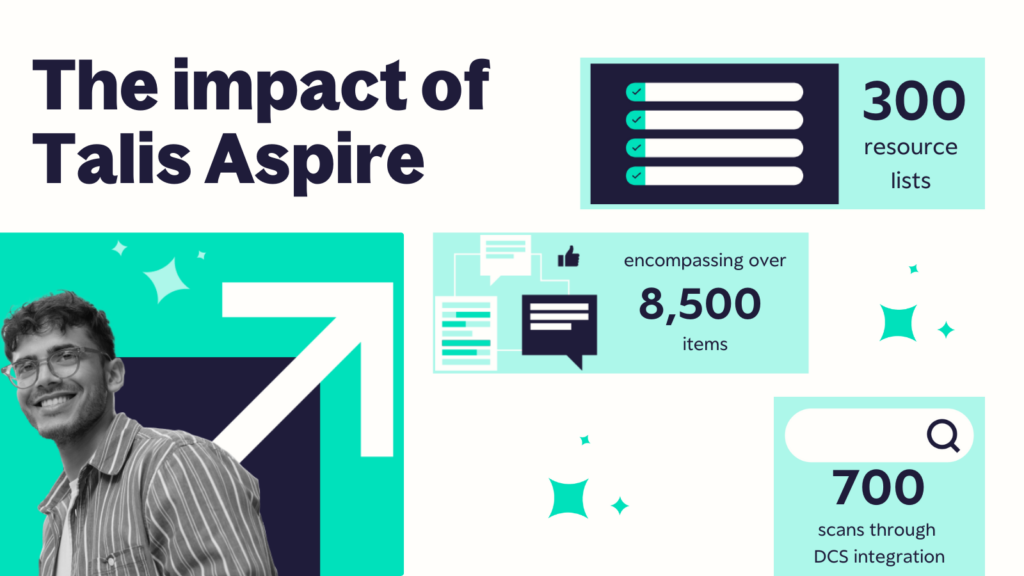
Within three months, GSA successfully launched Talis Aspire, migrating just under 300 resource lists comprising over 8,500 items and relinking 700 scans through DCS integration. The new system’s streamlined processes reduced the time required for updates, paving the way for academic self-management in the future.
Feedback from academics highlighted the seamless Canvas integration and support for embedding list sections. Academic staff also appreciated the system’s versatility in reference styles and its integration with reference management tools.
“Talis Aspire is fantastic and seems a lot more streamlined with Canvas.”
Feedback from academic staff
Talis Aspire has exceeded expectations for enhancing internal workflows and improving the resource acquisition process. Library staff have benefited from features like the Review process, which streamlined work assignment and reduced reliance on spreadsheets.
“The Consultants are very knowledgeable of the whole system and how it has been implemented at many different institutions. We were lucky that our consultant was a trained librarian prior to working for Technology from Sage, so had a good knowledge of how the system operated practically and logistically within library workflows.”
Jenna Meek, Assistant Librarian – Resource Lists, Glasgow School of Art
Moving forward, GSA plans to gather student feedback and pilot academic-led list editing. Training materials will support this hybrid approach, combining self-management by academics with library staff oversight.
GSA is also exploring Talis Aspire’s potential for student partnerships and co-creation of resource lists, supporting broader academic initiatives.
Discover how Talis Aspire can transform your resource list management. If you’d like to learn more or request a demo, get in touch.
Congratulations to our Library of the Month, Vrije Universiteit Amsterdam! January 21, 2025Each month we select a Library of the Month to honor libraries who have been using our library technologies in interesting and innovative ways, from creating well-curated reading lists with Talis Aspire to encouraging uptake of the Lean Library browser extension amongst their students. We’re also appreciating the intensive work of librarians in curating these technologies and improving learning outcomes for their students.
The winning library will be awarded a prize to share amongst their team or a donation to a charity of their choice as a way for us to say thank you.
Vrije Universiteit (VU) Amsterdam is a large university with 9 faculties, more than 150 bachelor’s programs, pre-master and master programs with 31,761 students, of which 19,736 are Bachelor students and 12,025 are Master students. The university’s motto is: Don’t just become something, become someone. Since its founding in 1880, VU has stood for scientific and values-driven education, research and valorization.
We’ve awarded them our Library of the Month Award for January, as the library team are committed to supporting their students find the research they need at the right time, directly in patron workflows. Vrije Universiteit Amsterdam are great advocates of both Lean Library and Talis Aspire and presented a session on the use of Open Educational Resources (OER) at the inaugural Tech from Sage Insight Conference in 2023.
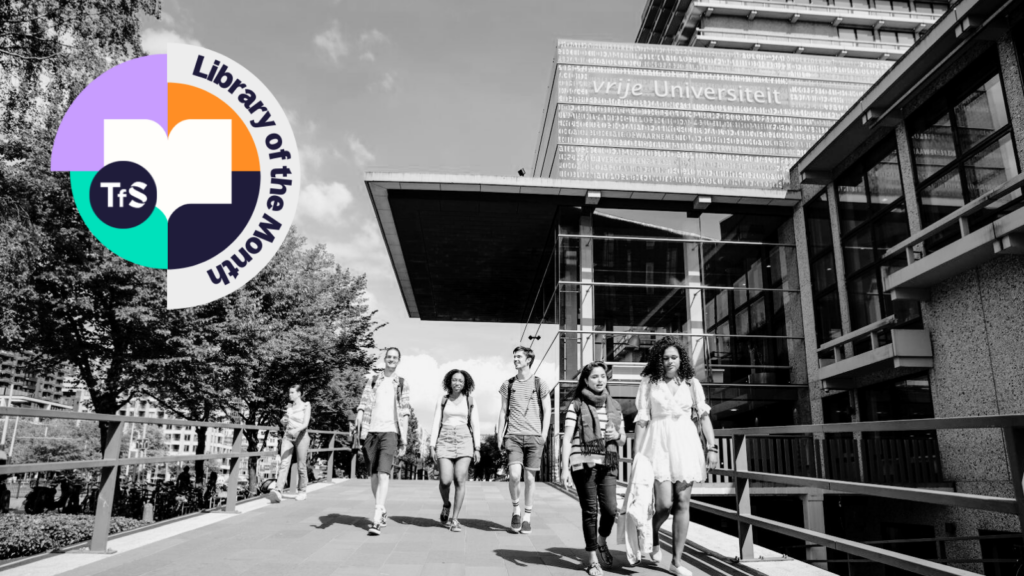
We asked Cees van Gent, Head of Department, Educational Support, University Library (Afdelingshoofd, Onderwijsondersteuning Universiteitsbibliotheek) at Vrije Universiteit Amsterdam to tell us more about the university library and what winning Library of the Month meant to them:
“Winning this award is a confirmation of our mission to support our academic staff and students in finding and using the content/learning materials they need for their research, lectures, and studies.
We try to support our end users where and when needed by providing them tools like Lean Library that can bring our services into the user’s workflow. We work together with parties such as Technology from Sage to develop and deliver this.
More information about how we work with Technology from Sage is to be found in this case study.”
Discover our previous winners below:
Could your library be next?
Join us next month to see who’s won.
Improved Research Integrity with Lean Library’s Latest Upgrade January 20, 2025At Technology from Sage, we’re constantly innovating to redefine and amplify the academic library’s role in advancing teaching, learning, and research. We’ve significantly upgraded our Lean Library browser extension, which prioritizes research integrity.
Lean Library has always been focused on embedding your library’s resources into your patrons’ online workflow, making research seamless and efficient. Our partnership with Scite has already empowered students and researchers with valuable citation insights, showing how academic articles are cited—whether supporting, contrasting, or neutral. But research demands more, especially in the age of GenAI…
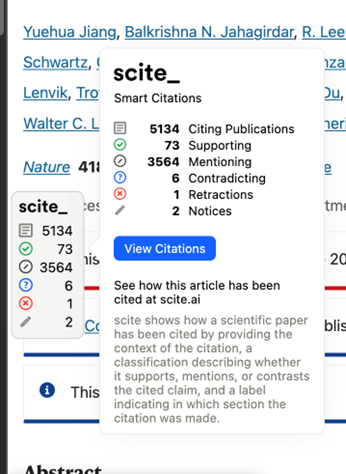
Image 1: How the Scite Smart Citations feature works with Lean Library to show how a scientific paper has been cited.
With this new update, Lean Library’s integration with Scite now goes one step further, pulling retractions and editorial notices directly into the Scite widget on the Lean Library browser extension. As researchers browse academic articles, they can instantly see whether an article has been retracted or flagged with an editorial notice, in addition to its citation context.
“Historically, it has been very challenging to tell if a paper has been supported, challenged, or even retracted. Scite was started to solve these challenges. Through our partnership with Lean Library, students and researchers can now easily access articles anywhere online and can be sure they are not missing any critical notices, such as a retraction. We’re thrilled to be working with Lean Library helping millions of researchers and students do better work.”
Josh Nicholson, PhD, Chief Strategy Officer at Research Solutions and co-founder of Scite
In the fast-paced world of academic publishing, maintaining trust and rigor in research is paramount. In 2023, the number of journal retractions surpassed 10,000 for the first time. Retraction data ensures that researchers can avoid relying on outdated or questionable studies, while editorial notices provide context about the quality or reliability of a publication.
The upgraded Lean Library extension displays this new layer of information automatically on academic websites where a DOI is discoverable. Whether you’re examining journal articles, preprints, or research papers on your favorite academic platform, you’ll have an at-a-glance view of:
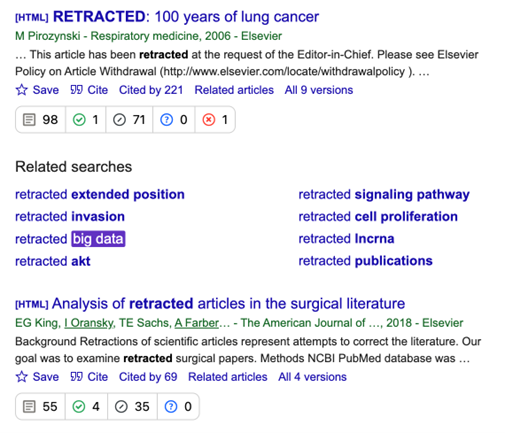
Image 2: How the Lean Library Scite feature Smart Citations works to at-a-glance citation notices and context when a researcher is searching via Google or Google Scholar.
This update enhances not only the experience for students and researchers but also the impact libraries have in fostering academic success. With this comprehensive citation and retraction data, libraries can:
Lean Library is designed to bring your library to where your patrons work, study, and research. With the latest Scite integration, the academic library is central to the research journey—while ensuring research integrity is never compromised.
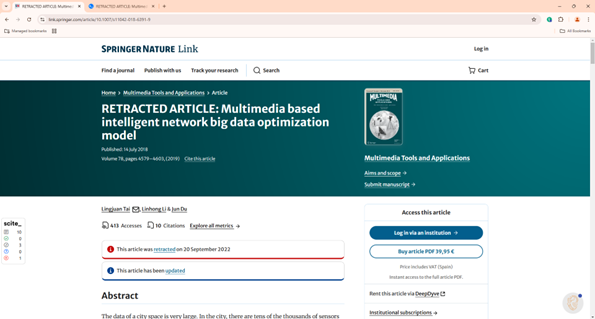
Image 3: How the Lean Library Scite feature quickly identifies articles that have been officially retracted.
Let us show you how we can transform your library’s impact on campus and beyond.
Learn more about Lean Library and our latest features at technologyfromsage.com or reach out to schedule a demo today.
Lean Library Case Study: University of Hertfordshire January 6, 2025

University of Hertfordshire has two vibrant and welcoming Learning Resource Centres, which are the beating heart of their urban campus in Hatfield, Hertfordshire, UK. Their academic and research collections are digital-first and complemented by a growing collection of fiction and well-being print titles.
With 35,000 students from over 110 countries, and more than 700 career-focused degree options, University of Hertfordshire chose Lean Library to ensure that their students and researchers can easily access the wealth of resources available to them.
What challenges was your library facing before using Lean Library?
“Traditionally we’ve always encouraged students to go directly to the online library to search. However, there’s been a definite shift where students aren’t doing that as much anymore. There are additional tools available now that they can use, and no matter how often we said, “Start here,” they would still choose their own methods.
We noticed a trend, and I don’t think it’s unique to our institution, where the use of library electronic resources was declining. I suspected this wasn’t because students weren’t using content, but rather because some of it was Open Access, meaning they no longer needed to go through the online library to access it. However, when they needed something that wasn’t Open Access, the question became: how were they finding it?
It became about bringing the library to where the user was, facilitating their processes. It became about “let’s make this as easy for them as possible”.
It sounds like bringing the library to patrons was what you were hoping to achieve with Lean Library?
“I guess it was also about raising brand awareness: “We are paying for these resources, this is your library, this is us helping you. We need to make sure that you understand we’re facilitating this process.” The fact that we could colour-code the extension to link to our existing branding—all of those things are really helpful, because it is the library paying for these subscriptions. Each time it pops up, it’s communicating that message to the end user that this is us doing our job—you might not be on campus; you could be anywhere in the world, but this is still us doing our job.
One more thing, it’s also about risk management. There’s the risk if you don’t provide easy routes to access things legally, then potentially people may decide to do things via routes that increase risk to the institution—things that open you up to a cybersecurity risk. It was also part of a risk management strategy: let’s make this as easy as possible so they don’t try and do something that opens their own device to risk or an institutional device to risk.”
University of Hertfordshire have used Lean Library Assist messages to communicate personalized messages to patrons via the Lean Library browser extension when they visit specific websites. The below Assist message lets patrons know they have access to a particular site via their library. This means that University of Hertfordshire’s library branding is displayed in patron’s workflows, marketing the library and increasing awareness with students.
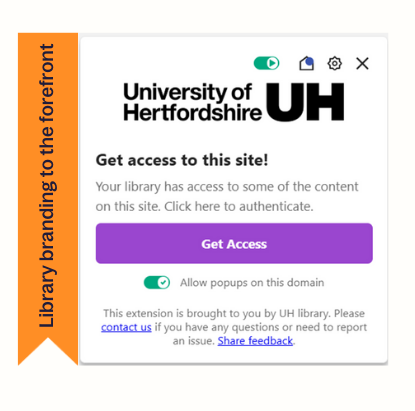
What made Lean Library stand out to you as part of the solution to the challenges we’ve discussed?
“We compared tools, and I advocated strongly for Lean Library. One, it was the branding element—let’s sell ourselves as having this. The second thing is that it builds into other features should we wish to get Lean Library Futures. My thought was if we got this then we could build on it later, if we can demonstrate that there’s a need and it’s working.”
You have fantastic usage results with almost 4,500 engaged users in one month—that’s an increase of over 2,000%. How have you promoted Lean Library to students, and what advice would you give to an institution picking up Lean Library for the first time?
“It’s a multifaceted way of spreading the word. One of the things I think we managed really well was making it easy for people to send out comms—we wrote the copy for them and said “Here you go, this is what Lean Library’s about!” We had emails directly to academics, and added a prompt to download Lean Library to the virtual learning environment that we could then add to any research module, library learning module, or programme page.
At the start of the academic year, we always update the programme page with a welcome from the library team, but now they also have a ‘Download Lean Library’ feature as well. That’s on every single programme in the institution, just to raise awareness.
We talked to our library and computing services staff, making sure every single member of staff would know what Lean Library is when someone comes to talk to them. They could also start downloading it themselves.
We wanted to show that if we gave this to students on a specific programme, we would see a direct link to interlibrary loans. Due of privacy restrictions however, we can’t see too much data. Working with IT colleagues we could show an increase in interlibrary loans from Lean Library during our pilot phase. This helped to demonstrate the value of Lean Library to our colleagues.”
“We asked the academic engagement team: “If you’re teaching, please mention it. Here’s a slide with a video, etc.” We tried to make it as easy for people as possible. We also started to promote it through our direct comms with researchers and added it to their pages on our institutional intranet. This is where researchers go, rather than students.
We also promoted Lean Library at staff-facing events—amazingly, one researcher came back to me and said, “This is making my grant writing so much easier!” I could then put that into all my comms, and she said I could use her name, so that was helpful. That really got buy-in because it was somebody recognisable saying, “this is amazing.”
Then there’s stuff that went out in the all-staff comms. Anything that mentioned research, we would get Lean Library mentioned. It was constantly repeating the message, putting it in lots of places for different members of our student and staff community.”
University of Hertfordshire had on average 4,673 engaged users in November 2024 (pictured on the bar chart below). Back in August 2024, they had an average of 206 engaged users. This shows an increase of over 2,000% from August to November, after a period of heavy Lean Library promotion by University of Hertfordshire.
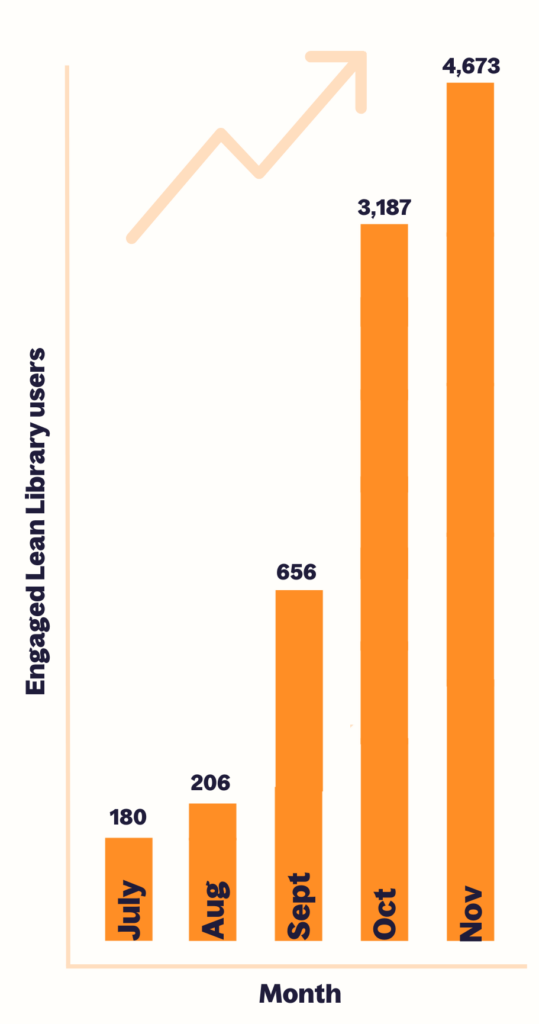
Have you seen a difference in the way your patrons interact with library collections and services since implementing and rolling out Lean Library?
“We’ve become a bit obsessed with looking at data! We have a dashboard that draws lots of data about interlibrary loans, and we could see that since the start of term our interlibrary loans have gone up 48%. Now not all of those are from Lean Library, but we could see that roughly 19% of our interlibrary loans were coming from Lean Library via an auto-populate route, which represents the highest proportion of all the different routes through which they could have requested an interlibrary loan. That was a really good thing to be able to say, “Hey, this is working!”
We’ve also been looking to see how many searches in PubMed are happening because it’s a free database and we encourage students to use it, and we teach them how to use it. I like to see after I’ve taught a session on PubMed that the number of Lean Library searches goes up. You can definitely see an increase when someone has introduced Lean Library at a session, and so you can see the message is definitely getting through.”
In 2024, University of Hertfordshire library connected students to resources almost 9,000 times via Lean Library via the below routes:
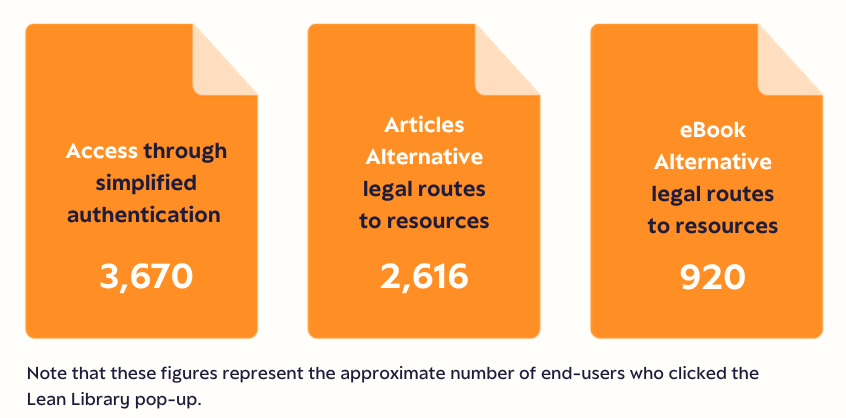
This has saved their patrons just over 2,700 hours in 2024, making accessing the research they need an easier and quicker process. Just over 900 of those hours were from October and November 2024 after heavy promotion efforts for Lean Library from University of Hertfordshire.
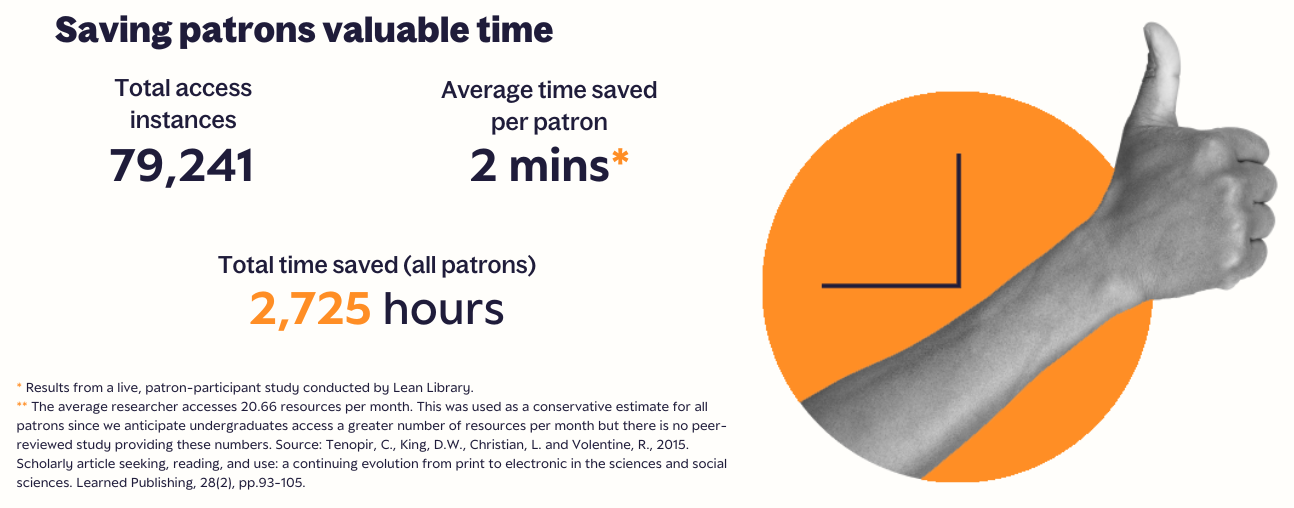
Find out more about Lean Library.
If you’d like to hear more or receive a product demo, get in touch.